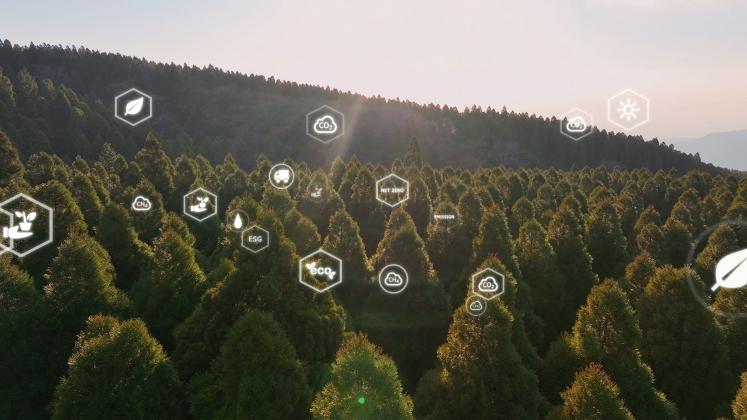The climate crisis shows no sign of abating. Millions worldwide continue to suffer amid record high temperatures, extreme weather events, and prolonged droughts. How we navigate and mitigate the effects of this crisis will partly depend on our use of Artificial Intelligence (AI).
This rapidly-evolving technology not only has a large carbon footprint – due to its voracious consumption of energy (and natural resources) – but causes additional environmental harms through its application. Consider, for instance, the additional coal, oil, and gas that AI can help to extract or the increased public consumption the technology encourages through automated advertising.
Equally, though, AI can be an important part of the solution: reducing the environmental impacts of key sectors like agriculture; supporting reforestation; optimizing energy use; lowering carbon emissions; and improving adaptation planning and early warning systems for climate-vulnerable communities.
Leveraging these opportunities while mitigating risks is a key consideration as the global community negotiates the forms and functions of AI governance, including the UK’s Bletchley Declaration, the Italian G7 Presidency’s commitments to AI in Africa, and of course, the UN’s AI Advisory Body, which is finalizing a series of recommendations for Member States to discuss during the upcoming Summit of the Future.
Supporting “local AI ecosystems”
One of the important rationales for a global governance of AI is enabling emerging economies to harness its benefits. A pathway towards this would be in developing a mechanism to support “local AI ecosystems,” especially in addressing climate change, which disproportionately affects developing countries.
The concept of the local AI ecosystem is a way of understanding the different interactions of various actors – small and medium-sized businesses, universities, the government, civil society organisations, international organisations, multinational companies, and investors – in a way that fosters innovation at the service of local communities.
Many emerging economies already have thriving AI ecosystems. Several G20 countries, such as Indonesia, South Africa, and Brazil, have AI hubs centred in their main urban areas. Jakarta, for example, has benefited from a targeted government strategy to promote AI development, including the 2020–2045 National AI Strategy and public investment in AI infrastructure. Indonesia is the home of several AI companies valued at over a billion dollars, including the Gojek platform, a multi-use application used widely throughout the region.
As the climate crisis worsens we need to urgently explore how AI ecosystems like this can be harnessed – and new ones developed – to support climate action. Here are five ideas:
1. Venture capital attraction
A key component of any start-up ecosystem, especially AI start-ups, is venture capital (VC) funding. This enables new ideas to be scaled up quickly and postpones early pressure for profitability, which can be a barrier for science teams. Many VC firms have begun to focus specifically on climate technology. Climate AI VC in developing countries would do a lot to foster local innovation.
2. University specializations in climate AI
Engineering and computer science programmes have begun offering specializations in climate and environmental AI. These programmes are critical parts of the ecosystem, as many innovations in AI come from students or recent graduates. These students can then have a pipeline to find local employment in climate AI, rather than being drawn out of the country by foreign companies.
3. Partnerships with regional and global International Financial Institutions or other multilateral financing mechanisms to develop local infrastructure
One of the main objectives of multilateral involvement in the global governance of AI is to harness AI for the Sustainable Development Goals and reduce the risk of power concentration in AI. Local governments can encourage investment from these mechanisms with a focus on computational and infrastructure development, critical foundations for a thriving AI ecosystem.
4. Encouraging multinational companies to create local research offices for climate action
Although multinational AI companies can sometimes accentuate risks of AI power concentration, if managed properly they can also be an invaluable partner for local governments building AI ecosystems. Notably, they can be encouraged to open local research offices for climate action and bring in new talent, while providing employment opportunities for local talent.
5. Inclusion of civil society in local climate AI strategies
Finally, no local AI ecosystem can thrive without the active inclusion of civil society. Civil society organizations should be empowered to work alongside universities and local companies to promote AI ethics, with a focus on human rights, identify action areas or climate-vulnerable groups, and ensure that the solutions brought forward have the community and the environment at the core of their design.
When it comes to climate AI, there are numerous opportunities that can be harnessed by a robust local AI ecosystem. Thriving AI ecosystems can open the door for new uses of AI for climate action, ones that may not have yet been considered. Global decentralization of AI and encouragement of local AI will be critical to ensure these technologies serve sustainable development and climate action, rather than undermine them.
The ideas outlined in this article will be presented at an Expert Meeting on AI and Climate, organized by UNU-EHS and UNFCCC Technology Executive Committee, to be held in Bonn on 1–2 July.
Suggested citation: Fournier-Tombs Eleonore ., "Five ways local AI ecosystems can foster climate action," UNU-CPR (blog), 2024-06-27, 2024, https://unu.edu/cpr/blog-post/five-ways-local-ai-ecosystems-can-foster-climate-action.


